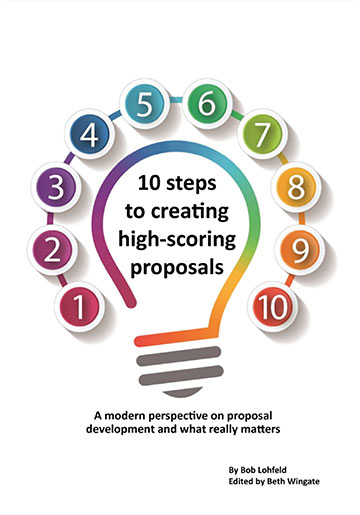Winning the WSMR Mission Support Services Solicitation Now

The Army Test and Evaluation Command (ATEC) requires Mission Support Services (MSS) at White Sands Missile Range (WSMR). This contract provides personnel for engineering, technical, maintenance, and administrative support services to the White Sands Test Center (WSTC). This contract also includes services related to experimentation, testing, research, assessment, development, and training in support of national security. A request for proposal (RFP) was issued on May 23, 2025, with submissions due by July 16, 2025.
Table 1 presents an overview of the procurement details.
Table 1: Overview
| Procurement Detail | Description |
| Solicitation Number | W51EW725RA003 |
| Award Type | Single award |
| Solicitation Date | May 23, 2025 |
| Questions Due | June 23, 2025, 2:00 PM CST |
| Proposals Due | July 16, 2025, 2:00 PM CST |
| Award Date | February 2026 (Estimate) |
| Value | $500M |
| Duration | 9-month(s) base plus 4 x 12-month(s) option(s) and a 6-month option to extend |
| Contract Type | Cost Plus Fixed Fee |
| NAICS Code | 541330 |
| Place of Performance | White Sands Missile Range, New Mexico |
| GovWin Identification Number | 223438 |
| Sam Notice ID | W51EW7-25-R-A003 |
Section L Requirements
Proposals must be valid for 270 days from the RFP closing date. Proposals cannot contain any classified information and will be submitted electronically via the Procurement Integrated Enterprise Environment (PIEE) Suite. Table 2 provides an overview of the proposal organization and page limits.
Table 2: Section L Proposal Requirements
| Description/ Volume | Instructions | Page Limit |
| Cover Letter | Must include: RFP# W51EW7—25-R-A003Proposal validity dateAt least 2 authorized prime offeror representatives who will serve as proposal POCs. | 2 |
| Volume I, Factor 1: Mission Capability | Must include: Title page (excluded from pg. count)Table of contents (excluded from pg. count)Acronym list/glossary (excluded from pg. count)Key personnel resumes (excluded from pg. count)Narrative sectionSub-Factor 1A: Management and StaffingSub-Factor 1B: Continuity of Operations | 75 |
| Volume II, Factor 2: Past Performance | Must include: Title page (excluded from pg. count)Acronym list/glossary (excluded from pg. count)Narrative section | 35 |
| Volume III, Factor 3: Small Business Participation | Must include: Title pageTable of contentsAcronym list/glossaryNarrative section | No page limitation |
Proposal Outline
Building upon the organizational aspects discussed above, it’s crucial to base the structure on Sections L, M, and the Performance Work Statement (PWS). This ensures that the outline aligns with the government’s expectations, making it easier to evaluate. Although automated tools, such as artificial intelligence (AI), can assist in generating outlines, the proposal team must conduct a thorough review independently of these tools. Do not depend on automated tools for accuracy and compliance.
The development of proposal outlines should follow a structured process:
- Mirror the RFP: Follow the RFP structure to make it easier for evaluators to navigate and review.
- Develop a Compliance Matrix: Construct a compliance matrix that maps each RFP requirement to a corresponding section in your proposal.
- Logical Organization: Use bolded headings and subheadings to organize content logically. Include references to the specific sections (L, M, or PWS) to maintain clarity and direct relevance to the RFP requirements.
- Outline Approval: Conduct an internal review of the outline to ensure all RFP sections are addressed. Before drafting begins, get a final agreement from the proposal team to ensure consensus and understanding of the approach to each RFP section. Cutting and pasting a previous outline may not reflect current requirements.
- Graphics: Consider where graphics might be used effectively to enhance understanding and reduce word count in the proposal.
- Recompetes: Never assume the outline for a recompete should be the same as the previous submission. Treat your recompete outlines the same way you treat a new proposal.
Section M Requirements
The contract award will be made to the proposal offering the best overall value to the government in accordance with FAR 15.101-1. All volumes will be evaluated using an adjectival rating system. Proposals must receive a minimum rating of “Acceptable” for the Technical /Missions Capability factor and sub-factors to be considered for award.
Relative Order of Importance: Mission capability is prioritized considerably over past performance, which is equally prioritized as small business participation. The subfactors within mission capability are prioritized differently; specifically, Subfactor 1A, the Management and Staffing Plan, is prioritized significantly over Subfactor 1B, Continuity of Operations. Overall, when combined, all evaluation criteria are valued substantially higher than the cost/price criterion.
Tips for Maximizing Your Evaluation Score
Maximizing your score requires a comprehensive understanding of the evaluation criteria in Section M and the requirements within the PWS. Highlight your experience in diverse environments, such as open-air operations or emerging technology testing. Tips for maximizing your evaluation score are provided below:
- Include quantitative proof points in your narrative to make it easy for an evaluator to rate your strengths.
- Include PWS section numbers within your narrative for easier evaluation.
- Set up an amendment tracker to ensure all required changes are documented and incorporated into your proposal. Your tracker should include the following:
- 1. Amendment number
- 2. Date of amendment
- 3. Description of the amendment requirement(s)
- 4. RFP section(s) affected by the amendment
- 5. Required proposal changes: Detail the specific adjustments needed in your proposal to comply with the amendment.
- 6. Complete date: Include a column to document when the required changes have been completed and integrated into your proposal.
- Exceed the minimum qualifications stated in the PWS for your proposed key personnel
- Involve your graphic illustrator in management and staffing discussions so that the detailed organizational flow charts can be updated in real-time. Offerors may be excluded from award if their organizational chart doesn’t align with the technical approach
- Provide examples of how challenges were managed, and quantitative evidence of any cost savings or efficiencies gained in your past performance volume
- Receiving a “Significant Strength” rating may be the difference between winning and losing the award. Hold a Strengths Solutioning session that includes all stakeholders, resulting in compelling strength statements with effective proof points
- Carefully review all CPARS, not just the ones related to your past performance contracts. Sprinkle CPARS accolades throughout your technical section to draw attention to past successes.
Use of AI to Evaluate Proposals
The government is considering the utilization of AI tools to assist in the analysis and review of proposals submitted by offerors. These tools would primarily be used to identify compliance issues and to highlight potential strengths, weaknesses, and risks within the proposals. It is crucial to note that all decision-making authority remains with the government. AI tools will not be used to make final decisions.
Conclusion
As the government increasingly relies on advanced tools such as AI for proposal reviews, offerors must adapt by ensuring their submissions are comprehensive, compliant, and data-driven. By focusing on clarity and quantifiable strengths, offerors can significantly enhance their chances of receiving a high-scoring evaluation. If you are interested in learning about Lohfeld Consulting’s Strength Based Winning® methodology or how we can help you win more awards, contact us today.
Relevant Information
By Brenda Crist, Vice President at Lohfeld Consulting Group, MPA, CPP APMP Fellow
Lohfeld Consulting Group has proven results specializing in helping companies create winning captures and proposals. As the premier capture and proposal services consulting firm focused exclusively on government markets, we provide expert assistance to government contractors in Capture Planning and Strategy, Proposal Management and Writing, Capture and Proposal Process and Infrastructure, and Training. In the last 3 years, we’ve supported over 550 proposals winning more than $170B for our clients—including the Top 10 government contractors. Lohfeld Consulting Group is your “go-to” capture and proposal source! Start winning by contacting us at www.lohfeldconsulting.com and join us on LinkedIn, Facebook, and YouTube(TM).
Paperback or Kindle
10 steps to creating high-scoring proposals
by Bob Lohfeld
contributors Edited by Beth Wingate
Subscribe to our free ebrief
Teaming friends, frenemies, and enemies—12 tips to mitigate harmful effects
Did you know that contracting officers spend up to 20% of their time mitigating disputes between teaming partners? In an informal poll we conducted on LinkedIn last month, 40% of respondents classified their teaming partners as “frenemies” on their last bid.
Explore Further
- Advice (539)
- AI (28)
- APMP (18)
- Army MAPS Contracts (3)
- Business Development (294)
- Capture Management (266)
- Complex Technology Grants Services (26)
- Favorite Books (5)
- GenAI (4)
- Go-to-Market (27)
- Graphics (5)
- Lohfeld Books (2)
- NASA SEWP VI Contracts (2)
- Navy SeaPort-NxG Contracts (2)
- NIST MSE Grants (1)
- NIST NAPMP Grants (2)
- Past Performance (63)
- Post-submission Phase (14)
- Pre-RFP Preparation (264)
- Proposal Management (339)
- Proposal Production (75)
- Proposal Reviews (38)
- Proposal Writing (107)
- Pursuit Phase (108)
- Research Report (4)
- Resources (63)
- Tools & Tips (421)
- Training (13)
- Uncategorized (223)

Sign Up for INSIGHTS and Download your FREE book
We'd love to help you with your proposals. Enjoy our complimentary Lohfeld Consulting Group Capture & Proposal Insights & Tips book with your FREE subscription to our Insights Newsletter.
GET YOUR FREE BOOK



